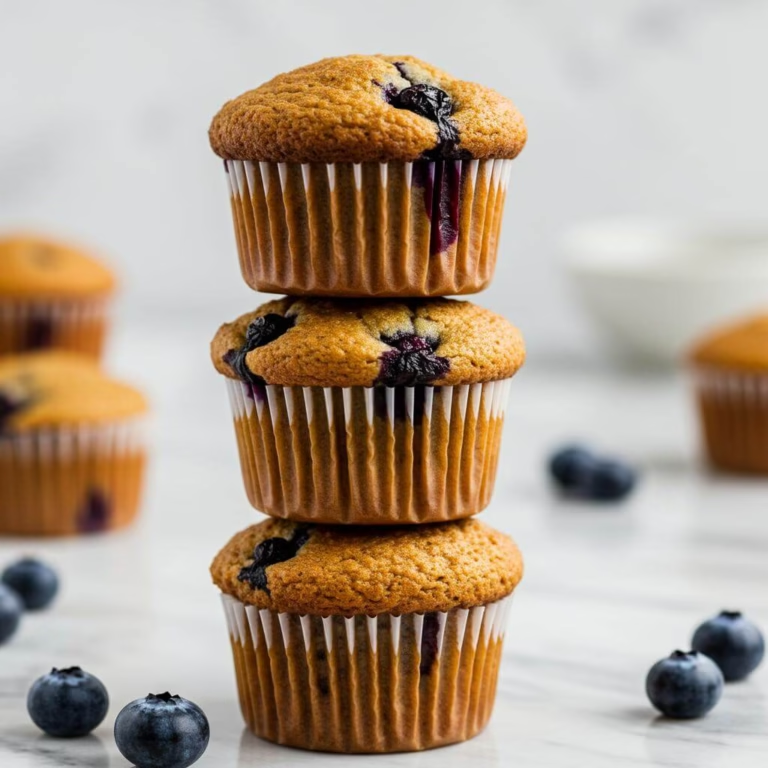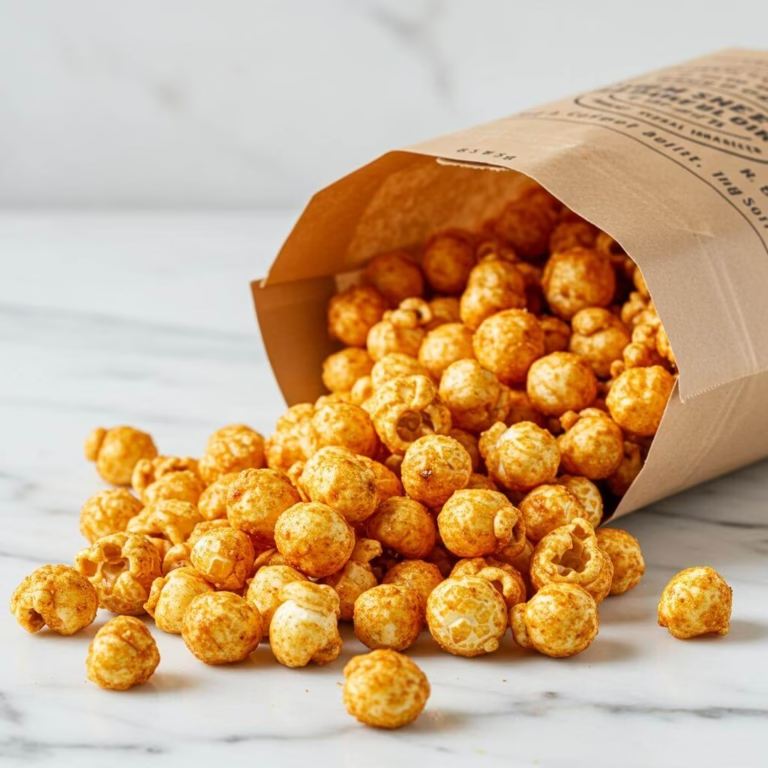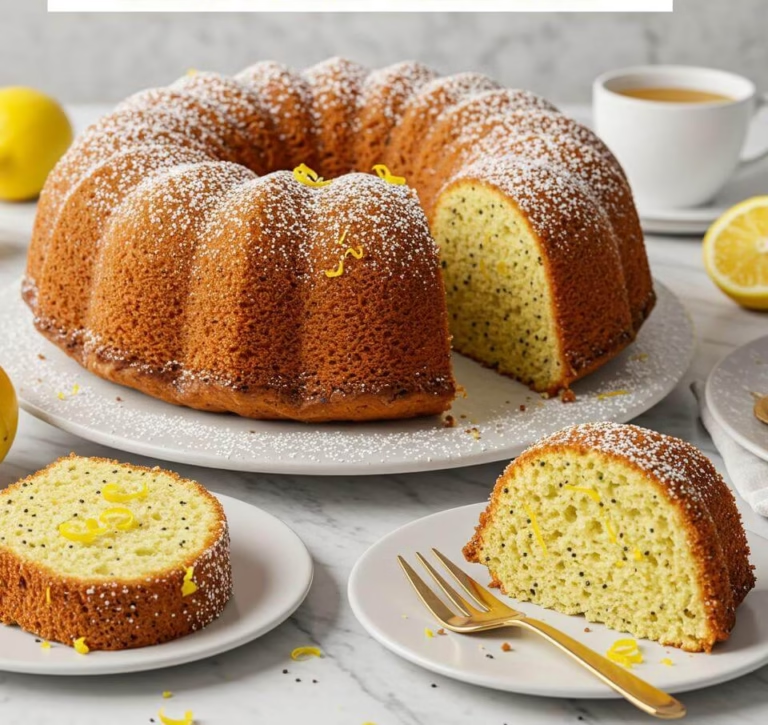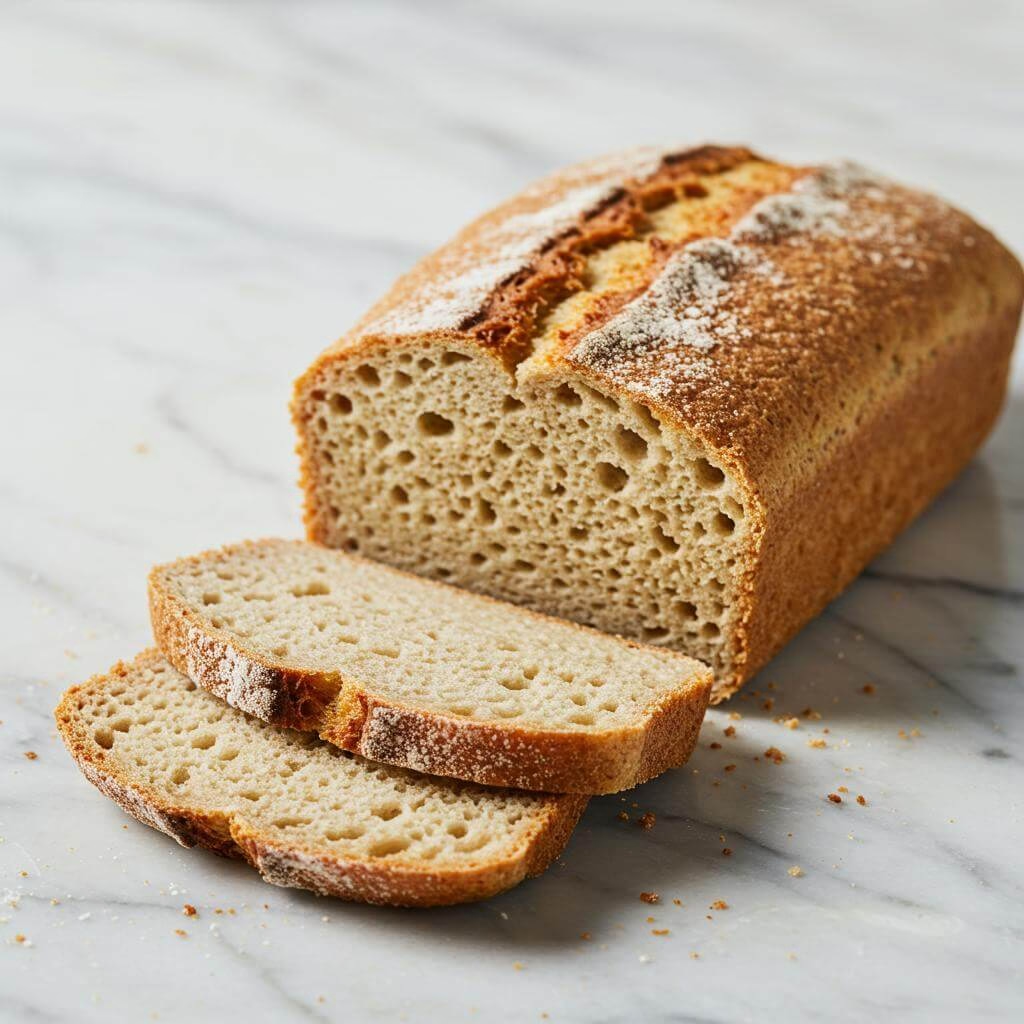
Welcome to Your New Favorite Gluten-Free Bread Recipe!
Are you on the endless quest for that perfect slice of gluten-free bread? You know, the kind that’s wonderfully soft, beautifully fluffy, and doesn’t crumble at the mere thought of being made into a sandwich? If you’ve been navigating the gluten-free world for a while, you understand the challenge. So many store-bought options miss the mark, leaving us longing for that classic bread experience. Well, your search might just be over! This gluten-free bread recipe is a true game-changer, designed to bring the joy of delicious, homemade bread back into your kitchen. Imagine pulling a golden loaf from your oven, the aroma filling your home, and knowing it’s perfectly safe and utterly delightful.
What makes this particular gluten-free bread recipe stand out? It’s all about that incredible texture and versatility. This isn’t just bread; it’s sandwich bread – soft enough to squish, flexible enough for a hearty filling, and perfect for your morning toast. Think about making some amazing gluten-free avocado toast or packing school lunches with confidence! We’ve focused on creating a recipe that yields a consistently soft crumb and a delightful taste, using straightforward ingredients you can easily find. Plus, this recipe is wonderfully dairy-free, using simple pantry staples like olive oil and water to achieve its fantastic moisture and structure, making it a fantastic option for many dietary needs.
Mastering a fantastic gluten-free bread recipe like this one can feel so empowering. It opens up a world of possibilities, from simple daily enjoyment to sharing with friends and family, proving that gluten-free eating can be incredibly satisfying. We’ve included tips to guide you through the process, like choosing the right loaf pan (a 9×4 inch one often yields the best rise!) and ensuring your yeast is happy, to make your baking experience smooth and successful. This isn’t just about following instructions; it’s about understanding the nuances that make gluten-free baking shine. If you’re enjoying the process of baking from scratch, why not also try your hand at our fluffy gluten-free dinner rolls?
Get ready to fall in love with baking bread all over again. This easy gluten-free bread recipe is designed for home bakers of all levels, promising a soft, fluffy loaf that will quickly become a staple in your gluten-free kitchen. It’s more than just a recipe; it’s your ticket to enjoying delicious, satisfying bread without compromise. And once you’ve mastered this, you might be inspired to explore other baked goodies, like our ever-popular the best gluten-free banana bread. Let’s get baking!
Why This Gluten-Free Bread Recipe Is Pure Magic
Okay, let’s talk about the incredible science and art behind this particular **gluten-free bread recipe**. If you’ve ever tried gluten-free baking, especially yeast bread, you know it can be… challenging. Sometimes you end up with a dense brick, a crumbly mess, or something that just doesn’t feel like “real” bread. But THIS recipe? It’s a game-changer, consistently delivering soft, fluffy, sliceable sandwich bread. So, what makes this specific **gluten-free bread recipe** shine?
The secret lies in a carefully orchestrated blend of ingredients and techniques designed to replace the vital functions of gluten, which is the protein network that gives traditional bread its structure, elasticity, and chew. Without gluten, we need substitutes that can hold the dough together, allow it to rise, and create a tender crumb. This oven-baked **gluten-free bread recipe** nails it on multiple fronts.
Building the Perfect Gluten-Free Structure
In traditional bread, kneading develops the gluten network, which traps the carbon dioxide gas produced by yeast, causing the bread to rise and creating that signature airy texture. In a **gluten-free bread recipe**, we need different tools to achieve a similar effect.
* **The Right Gluten-Free Flour Blend:** The recipe specifically calls for a tested all-purpose gluten-free flour blend, like Pillsbury, and importantly, advises *against* using blends not recommended for yeast baking (like some 1:1 blends from Bob’s Red Mill or King Arthur). This is crucial! Not all gluten-free flour blends are created equal, especially for yeast applications. A good blend for yeast bread typically incorporates a mix of starchy flours (like rice flour, potato starch, tapioca starch) and possibly some protein-rich flours (like sorghum or brown rice). The balance of these creates a foundation that can absorb liquid correctly and interact with binders. Using the recommended flour is step one to success with this particular **gluten-free bread recipe**.
* **Xanthan Gum: The Gluten Mimic:** This is arguably one of the most essential ingredients in many **gluten-free bread recipes**, and it’s included here. Xanthan gum is a hydrocolloid, meaning it forms a gel-like substance when hydrated. In gluten-free baking, it mimics the viscoelastic properties of gluten. It helps to hold the dough together, provides structure, and, most importantly, traps those precious bubbles of carbon dioxide gas produced by the yeast during proofing and baking. This allows the loaf to rise tall and prevents it from collapsing into a crumbly mess. The recipe wisely notes to omit it if your chosen flour blend already contains it, preventing an overly gummy texture.
* **Egg Whites: The Protein Powerhouse:** The use of three egg whites is a key contributor to the structure and texture of this **gluten-free bread recipe**. Egg whites are primarily protein (albumin). When heated, these proteins coagulate, creating a strong, stable network. This network works alongside the xanthan gum to provide additional structure, helping the bread hold its shape as it bakes. Egg whites also contribute to a lighter, airier texture and improve the bread’s ability to bend and squish, making it feel more like conventional sandwich bread.
The Magic of Leavening and Moisture
Achieving a good rise and a moist, tender crumb is vital for any great bread, and this **gluten-free bread recipe** employs smart techniques to ensure both.
* **Instant Yeast: The Primary Lifter:** Rapid rise or instant yeast is a faster-acting yeast, perfect for a recipe with a single, relatively short proofing period (30 minutes!). It’s mixed directly with the dry ingredients, simplifying the process. Yeast converts sugars into carbon dioxide gas and alcohol, and the gas is what makes the dough rise. The recipe’s emphasis on using *warm* water (100-110°F) is critical, as this is the ideal temperature range for yeast activation – too cold and it’s sluggish, too hot and you kill it! This ensures the yeast is active and ready to perform, giving your oven-baked **gluten-free bread recipe** the lift it needs.
* **Baking Powder: The Backup Booster:** While yeast does the heavy lifting, a touch of gluten-free baking powder provides an extra layer of leavening. Baking powder is a chemical leavener that reacts when moistened and/or heated to produce carbon dioxide. This secondary lift helps ensure a lighter, more even crumb structure and can contribute to overall tenderness, making this **gluten-free bread recipe** reliably fluffy.
* **Oil and Warm Water: Moisture and Dairy-Free Richness:** The recipe uses a mixture of olive oil and warm water instead of milk or butter, making it brilliant for those needing a dairy-free option. The warm water hydrates the flours and activates the yeast. Olive oil adds essential moisture and richness without the need for dairy. Fats in bread contribute to tenderness, improve the crumb texture, and help keep the bread soft and moist over time, combating the common issue of gluten-free bread drying out quickly. This clever substitution ensures this **gluten-free bread recipe** stays delightful for longer.
* **Honey (or Syrup): Yeast Food and Flavor:** Honey serves multiple purposes. First, it feeds the yeast, providing the necessary sugar for fermentation and gas production. Second, it adds a subtle sweetness that enhances the flavor of the bread. It also contributes to the beautiful golden-brown color of the crust during baking.
Supporting Players and Expert Techniques
Even the smaller details in this **gluten-free bread recipe** contribute to its success.
* **Apple Cider Vinegar: The Tenderizer:** A small amount of apple cider vinegar adds a touch of acidity. Acid can help tenderize the crumb and may slightly enhance the action of the baking powder. It also contributes to the overall flavor balance, preventing the bread from tasting flat.
* **Salt: Flavor and Control:** Salt is vital for flavor in any bread. It also plays a role in controlling yeast activity, preventing it from rising too fast and potentially collapsing.
* **Mixing Method: Embracing the Batter:** The recipe instructs using a stand mixer with a paddle attachment, not a dough hook, and notes the dough will be like a thick cake batter. This is *key* for gluten-free yeast doughs! Since there’s no gluten network to develop through kneading, the goal of mixing is simply to thoroughly combine and hydrate the ingredients and distribute the leaveners and binders evenly. The batter-like consistency is exactly what you want for this type of bake.
* **The Pullman Pan Advantage:** Recommending a smaller Pullman loaf pan is excellent advice. Because gluten-free dough lacks the inherent structure of wheat dough, it benefits greatly from the support of the pan walls during rising and baking. A Pullman pan, with its straight sides, encourages the dough to rise *up* rather than spread out, resulting in a taller, more uniform loaf that’s perfect for slicing into sandwich bread. Using a standard loaf pan often results in a shorter, wider loaf.
Achieving the Perfect Finish
The final steps are just as important for this **gluten-free bread recipe**.
* **Controlled Proofing:** The short, 30-minute proofing time in a warm place is ideal. Gluten-free dough doesn’t handle over-proofing well; it can rise beautifully and then collapse. Keeping the proof short and sweet ensures the yeast has time to create gas for lift but not so long that the structure weakens.
* **Proper Baking:** Baking at the correct temperature (350°F) for the specified time, until the internal temperature reaches 205-210°F, ensures the bread is fully cooked through without drying out. The internal temperature is the most reliable indicator of doneness for bread.
* **Cooling Gracefully:** Letting the bread cool in the pan for just 10 minutes before moving it to a wire rack is crucial. Cooling completely on the rack allows steam to escape. If it cools entirely in the pan, trapped steam can make the bottom and sides soggy, undermining all your hard work creating that lovely texture for your homemade **gluten-free bread recipe**.
By combining specific, effective gluten-free ingredients like xanthan gum and egg whites with careful techniques like controlled proofing, precise mixing, and using the right pan, this **gluten-free bread recipe** successfully conquers the challenges of gluten-free baking. It delivers a soft, fluffy, flexible loaf that truly satisfies, proving that living a gluten-free lifestyle doesn’t mean sacrificing delicious, homemade bread. This recipe is a testament to achieving amazing results by understanding the unique needs of gluten-free dough and meeting them head-on!
Transform Your Mornings with 33 FREE Gluten-Free Breakfasts!
Unlock delicious, easy-to-make recipes that will make you excited to start every single day. No more boring breakfasts, just pure flavor and joy!

Get Your FREE Breakfast Ebook Now!
(No credit card required. Instant download.)
Ingredients
Crafting this fluffy, delicious gluten-free bread starts with simple, readily available ingredients. Here’s what you’ll need:
- 2 1/2 cups all-purpose gluten-free flour: The foundation of our gluten-free bread recipe. Not all blends work the same, especially for yeast baking. The recipe notes that blends like Bob’s Red Mill 1 for 1 and King Arthur Measure for Measure may not be recommended for yeast breads by their manufacturers. Consider using a blend designed for yeast baking or one you’ve had success with in similar recipes. Find gluten-free flour blends on Amazon.
- 1 teaspoon xanthan gum: This is a crucial binder in gluten-free baking, mimicking the elasticity and structure that gluten provides. If your chosen flour blend already contains xanthan gum, omit this extra teaspoon. Purchase xanthan gum here.
- 1 teaspoon gluten-free baking powder: Provides a little extra lift and tenderness to the crumb of the bread. Ensure it is certified gluten-free.
- 1 packet rapid rise/instant yeast* (2 1/4 teaspoons): This type of yeast is designed to be mixed directly with dry ingredients and speeds up the proofing process, making this a truly easy gluten-free bread recipe. Ensure your yeast is fresh and stored correctly.
- 1/4 cup extra virgin olive oil: Adds moisture and richness to the dough, contributing to a soft texture.
- 1/4 cup honey: Provides sweetness and, importantly, food for the yeast to activate and help the bread rise.
- 1 teaspoon apple cider vinegar: Adds a touch of acidity that can help tenderize gluten-free dough and interact with the baking powder for better lift.
- 1 1/2 cups warm water (100-110°F): The perfect temperature to activate the rapid-rise yeast without killing it.
- 3 egg whites (from large eggs and room temperature**): Provide structure and protein to the bread without the added fat of the yolks, contributing to the soft, fluffy texture. Using room temperature eggs ensures they incorporate better into the batter and don’t cool down the yeast.
- 1 teaspoon salt: Balances the sweetness and enhances the overall flavor of the bread. It also helps control yeast activity.
*Rapid-rise yeast thrives in a warm environment and doesn’t require separate proofing before adding to the dough, as long as you use warm water (100°–110°F). You can optionally check if your yeast is active by dissolving honey in warm water, adding the yeast, and waiting 5 minutes for bubbles to appear.
**Using room-temperature ingredients like egg whites and water helps ensure consistent dough temperature, which is crucial for yeast activity and a good rise in your gluten-free bread.
Nutritional Information
Enjoying homemade gluten-free bread means you know exactly what goes into it. This specific gluten-free bread recipe offers some great nutritional benefits:
- Serving Size: 1 slice (approximation)
- Calories: 114 kcal
- Carbohydrates: 18g
- Protein: 3g
- Fat: 4g
- Saturated Fat: 0.5g
- Polyunsaturated Fat: 0.5g
- Monounsaturated Fat: 3g
- Sodium: 189mg
- Potassium: 18mg
- Fiber: 2g
- Sugar: 5g
- Vitamin C: 0.03mg
- Calcium: 29mg
- Iron: 1mg
As a dairy-free recipe, it’s suitable for those avoiding milk products. The use of specific gluten-free ingredients makes it safe for celiac or gluten-sensitive individuals. The fiber content comes from the gluten-free flour blend. Note: Nutritional information is automatically calculated and should be used as an approximation.
Substitutions & Variations
One of the best parts of making your own gluten-free bread is the ability to customize it! Here are a few ideas to help you adapt this easy gluten-free bread recipe to your needs and preferences:
- Sweetener: The recipe specifies honey but notes you can easily substitute with the same amount of agave nectar or maple syrup for a different flavor profile or to make the bread suitable for vegan diets (ensure all other ingredients are vegan too, though the egg whites here would be an issue for strict vegans unless you use an egg replacer specifically designed for yeast breads, which can be tricky).
- Gluten-Free Flour Blends: As noted, different blends behave differently in yeast baking. While this gluten-free bread recipe works well with various all-purpose blends, results can vary. If your blend doesn’t contain xanthan gum, be sure to add it. Experiment with blends recommended for yeast baking for best results with this homemade gluten-free bread.
- Oil: While extra virgin olive oil is specified, other neutral-flavored oils like avocado oil or light olive oil could likely be substituted, though the flavor and texture might be slightly affected.
- Dairy-Free: This recipe is already conveniently dairy-free, using oil and water instead of milk, making it a great option for those with dairy intolerances or allergies looking for a soft gluten-free sandwich bread.
- Add Seeds: For a seedy gluten-free bread, stir in 2-4 tablespoons of seeds like sunflower, pumpkin, flax, or chia seeds into the “thick cake batter” dough before pouring it into the pan. You can also sprinkle seeds on top before baking.
- Herb Bread: Add 1-2 tablespoons of finely chopped fresh herbs like rosemary or thyme to the dough for a savory twist on this easy gluten-free bread recipe.
- Slightly Sweeter Loaf: If using this bread for things like French toast or breakfast, you could slightly increase the honey (or other sweetener) by a tablespoon or two, keeping in mind it might affect yeast activity slightly.
Additional Tips for Perfect Gluten-Free Bread
Achieving that perfect, soft loaf with any gluten-free bread recipe requires a few key considerations. Keep these tips in mind:
- Measure Flour Accurately: Always use the “spoon & level” method for measuring your gluten-free flour. Spoon the flour into your dry measuring cup and level off the top with a straight edge like a knife. Scooping directly from the bag can compact the flour, leading to too much flour and a dry, dense loaf.
- Use the Right Pan: While a standard 9″x 5″ bread pan works, for a taller, more classic sandwich loaf shape, a 9″x 4″ Small Pullman loaf pan is highly recommended. This helps the gluten-free dough rise upwards.
- Proofing Environment: Gluten-free dough rises best in a warm, draft-free place. An oven on a “bread proofing” setting (around 100°F) is ideal. Avoid over-proofing; once the dough has doubled in size (usually around 30 minutes for this recipe), it’s ready to bake. Over-proofed gluten-free dough can collapse.
- Cooling is Crucial: Do not let the loaf cool completely in the pan! After 10 minutes, remove it and place it on a wire cooling rack. This allows air circulation and prevents steam from getting trapped, which can make the bottom and sides of your beautiful homemade gluten-free bread soggy. Wait until it’s completely cool before slicing.
- Slicing Technique: Use a serrated knife to slice your cooled gluten-free bread. A smooth blade can squish the soft loaf. Avoid pre-slicing the entire loaf before storing, as this can cause it to dry out faster.
- Storage and Freezing: Store completely cooled leftover bread in an airtight container at room temperature. For longer storage, this gluten-free bread can be frozen. Wrap the cooled loaf tightly in plastic wrap, then foil or freezer paper, and place in a freezer bag. It keeps well for up to 3 months. Thaw in the refrigerator overnight.
- Mixing: Use the paddle attachment on your stand mixer, not a dough hook, as gluten-free dough has a batter-like consistency, not a traditional elastic dough texture. Mixing for the specified times helps develop the necessary structure.
With these tips, you’re well on your way to making delicious, soft, and fluffy homemade gluten-free bread! Enjoy this fantastic gluten-free bread recipe.
Essential Equipment for This Recipe
To prepare this delicious recipe, you’ll need the following kitchen tools:
- Mixing Bowls – A variety of sizes are useful for different stages of the recipe.
Find Mixing Bowls on Amazon - Measuring Cups and Spoons – Accurate measuring is key for baking and cooking.
Find Measuring Cups and Spoons on Amazon - Baking Sheets – For baking cookies, roasting vegetables, and more.
Find Baking Sheets on Amazon - Whisks – Essential for whipping cream, eggs, or combining dry ingredients.
Find Whisks on Amazon - Spatulas – Perfect for folding ingredients and scraping bowls clean.
Find Spatulas on Amazon - Food Processors – Can be used to quickly chop vegetables or make sauces.
Find Food Processors on Amazon - Saucepans – Useful for cooking sauces, soups, or melting ingredients.
Find Saucepans on Amazon - Chef’s Knives – A good quality knife makes food preparation easier and safer.
Find Chef’s Knives on Amazon - Cutting Boards – Protect your countertops and provide a safe cutting surface.
Find Cutting Boards on Amazon

- Begin by prepping your baking environment and gathering all your ingredients. Position an oven rack in the center of your oven and preheat your oven to 350°F (175°C). Select your preferred loaf pan; a 9-inch x 4-inch Small Pullman loaf pan is highly recommended for a taller loaf, but a standard 9-inch x 5-inch bread pan will also work. Generously spray the inside of your chosen pan with gluten-free cooking spray, ensuring full coverage to prevent sticking. Having all your ingredients measured and ready before you start mixing is always a good practice for any baking project, especially for a gluten-free bread recipe.
- In a large mixing bowl (or the bowl of your stand mixer if using), whisk together the dry ingredients: the all-purpose gluten-free flour (measured using the “spoon and level” method for accuracy), the gluten-free baking powder, and the instant yeast. If your chosen gluten-free flour blend does not already contain it, add the xanthan gum now. Stir these dry ingredients together thoroughly to ensure they are well combined before adding any liquids. This step is crucial for the even distribution of leavening agents throughout your delicious homemade gluten-free bread dough.
- Next, add the initial wet ingredients to the dry mixture. Pour in the extra virgin olive oil, honey (or your chosen alternative sweetener like agave nectar or maple syrup), and apple cider vinegar. Add the warm water; aim for a temperature between 100-110°F (38-43°C). This temperature is perfect for encouraging the rapid rise yeast to activate without being so hot that it harms it. If using a stand mixer, attach the paddle attachment (not the dough hook, as gluten-free dough is different from wheat dough). Mix on low speed for exactly 1 minute to bring the initial ingredients together.
- Now, add the remaining wet ingredients: the room-temperature egg whites and the salt. Continue mixing, increasing the speed to medium, for another 1 minute. During this mixing time, the dough will transform and thicken considerably. Don’t be alarmed by the consistency; unlike traditional wheat dough, gluten-free bread dough is typically quite wet and resembles a very thick cake batter or a soft, cohesive paste rather than a firm dough you can knead. This is the correct texture for this soft gluten-free bread recipe.
- Carefully pour the mixed dough into your prepared, greased loaf pan. Use a spatula to scrape all the dough from the bowl and smooth the top slightly if needed, though it doesn’t need to be perfectly even. To prepare for proofing, take a piece of plastic wrap and spray one side with gluten-free cooking spray. Lightly lay the greased side of the plastic wrap over the top of the dough in the pan (the spray prevents sticking as it rises). For extra warmth, drape a clean kitchen towel over the plastic-covered pan.
- Place the covered loaf pan in a warm spot to proof (or rise). A warm spot is essential for yeast activity; your oven with a proofing function (usually around 100°F/38°C) is ideal if you have one, or simply a warm corner of your kitchen. Allow the dough to rise undisturbed for about 30 minutes. Gluten-free dough doesn’t need to double *exactly* like wheat dough, but you should see a noticeable increase in volume, usually rising towards the top of the pan. Be mindful not to over-proof, as this can sometimes negatively impact the final texture of gluten-free loaves.
- Once the proofing time is complete and the dough has risen, remove the plastic wrap and towel. Place the loaf pan horizontally on the middle oven rack that you prepared earlier. Bake the bread in the preheated 350°F (175°C) oven for approximately 30 minutes. You’ll know your oven baked gluten-free bread is done when the top is beautifully golden brown and the internal temperature, checked with a food thermometer inserted into the center of the loaf, registers between 205-210°F (96-99°C). This internal temperature range ensures the loaf is fully cooked through.
- After baking, carefully remove the bread from the oven. Place the pan on a cooling rack and let the loaf cool in the pan for about 10 minutes. This initial cooling period helps the bread structure set slightly.
- After the 10-minute rest in the pan, it’s crucial to remove the loaf from the pan and place it directly onto the cooling rack to cool completely. Allowing the bread to cool entirely outside the pan prevents steam from getting trapped underneath, which can lead to a soggy bottom. Patience is key here! Your delicious basic gluten-free bread recipe loaf must be completely cool before you attempt to slice it. Slicing warm gluten-free bread can cause it to collapse, become gummy, or squish.
- Once the bread is fully cooled, use a sharp serrated knife to slice it. A serrated edge cuts through the loaf cleanly without compressing it, which can easily happen with a smooth blade on soft gluten-free loaves.
- To store any leftover easy sandwich gluten-free bread, place it in an airtight container or bag at room temperature on the counter. For the best texture and freshness, it’s preferable to store the remaining portion of the loaf unsliced and slice off pieces as you need them.
- If you won’t be using the bread within a few days, it freezes beautifully! Once the loaf is completely cool, wrap it tightly in plastic wrap, then wrap it again in aluminum foil or specialized freezer paper. Place the double-wrapped loaf into a freezer-safe bag. Properly frozen yeast gluten-free bread can be stored for up to 3 months. To thaw, simply transfer the wrapped loaf from the freezer to the refrigerator overnight.
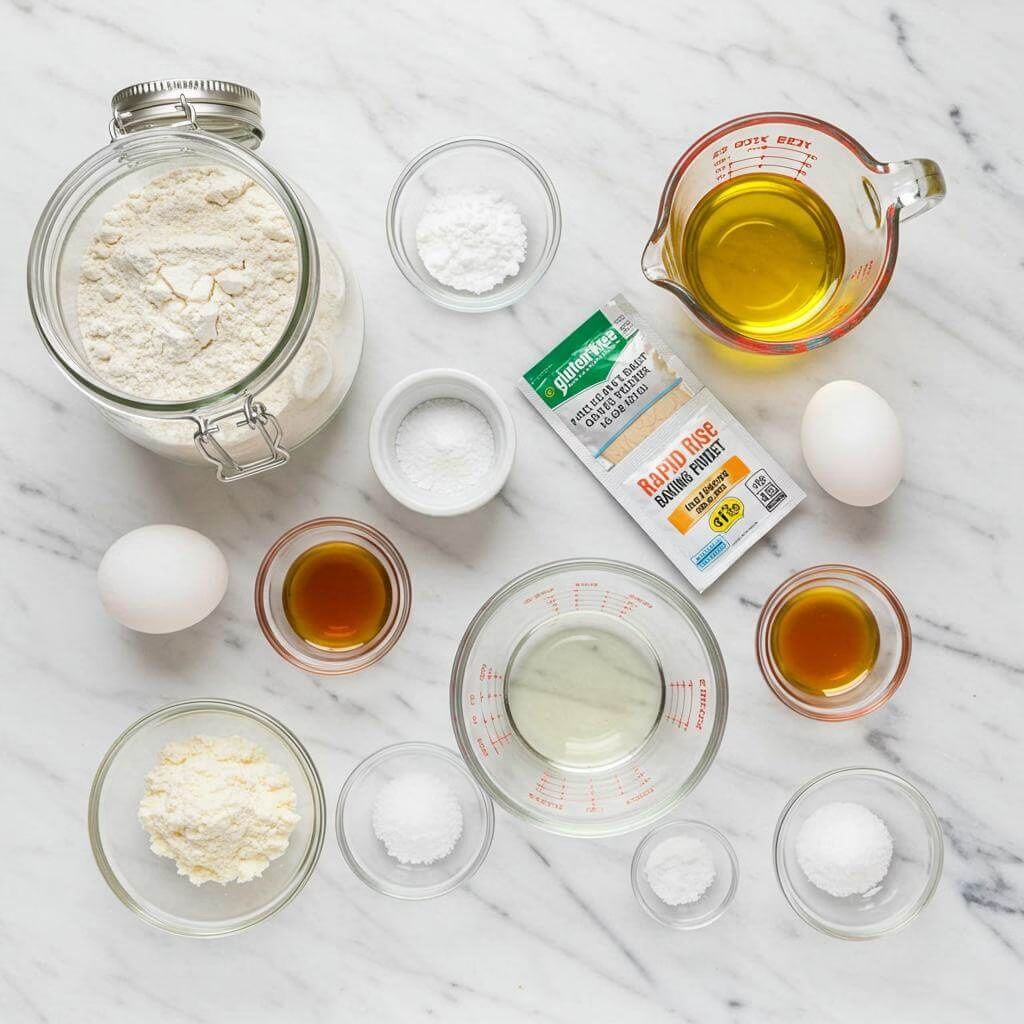
Tips for Perfect Gluten-Free Bread Results
Making a delicious, soft, and fluffy gluten-free loaf at home is absolutely achievable! This particular gluten-free bread recipe is designed for success, but keeping these essential tips in mind will help you get the best possible texture and rise every single time. Think of these as your secret weapons for a perfect loaf!
- Prioritize Ingredient Temperature: For this gluten-free bread recipe, using room-temperature egg whites and warm (but not too hot!) water (100-110°F) is crucial. Yeast is a living organism and thrives in warmth; cold ingredients will slow down or even kill its activity, resulting in a poor rise. Letting your egg whites sit out for about 5 minutes before using is usually enough.
- Measure Your Gluten-Free Flour Accurately: The “spoon & level” method is your best friend here! Scooping gluten-free flour directly from the bag compresses it, meaning you’ll end up with too much flour. This leads to a dry, dense loaf. Spoon the flour lightly into your measuring cup and level it off with a straight edge like the back of a knife. This precision is key in any gluten-free bread recipe.
- Understand Your Flour Blend & Xanthan Gum: Not all gluten-free all-purpose blends are created equal, especially for yeast baking. Some contain binders like xanthan gum, while others don’t. This recipe calls for adding xanthan gum; if your blend already has it listed in the ingredients, omit the extra amount called for in the recipe. Too much binder can make your bread gummy.
- Use the Right Mixer Attachment: This gluten-free dough has a consistency closer to thick cake batter than traditional elastic wheat dough. Use the paddle attachment on your stand mixer, not the dough hook. The paddle is designed to incorporate ingredients and build structure in batter-like mixtures, which is what works best for this type of gluten-free bread recipe.
- Embrace the “Thick Batter” Dough: Don’t expect a traditional kneadable dough. The final mixture for this gluten-free bread recipe should resemble a very thick cake batter. It won’t form a cohesive ball you can handle easily. This is normal and ensures the final baked loaf is moist and tender.
- Choose the Recommended Pan Size: Using a 9″x 4″ Small Pullman loaf pan is highly recommended in this gluten-free bread recipe. The slightly narrower and taller shape encourages the dough to rise upwards, giving you a taller, more classic sandwich loaf shape compared to a standard 9″x 5″ pan, which might yield a flatter loaf.
- Don’t Over-Proof: Gluten-free dough doesn’t develop structure the way wheat dough does. It benefits from a specific rise time (like the 30 minutes specified here), but letting it go too long can cause the structure to collapse in the oven, resulting in a flat or cratered top. Stick to the recommended proofing time and location.
- Check for Internal Temperature: While looking golden brown is a good sign, the most accurate way to know if your gluten-free bread is fully baked is to check its internal temperature using an instant-read thermometer. It should register between 205-210ºF (96-99ºC). Baking to the correct temperature ensures the crumb is set and not gummy.
- Cool Properly: Resist the urge to let the bread cool completely in the pan! After the initial 10 minutes, transferring the loaf to a wire cooling rack allows air circulation on all sides. This prevents steam from getting trapped, which can make the bottom crust soggy. Cooling completely on the rack before slicing is essential for the crumb to set properly in this gluten-free bread recipe.
Common Gluten-Free Bread Mistakes to Avoid
Even with a great gluten-free bread recipe, a few common missteps can hinder your success. Knowing what to look out for will help you bake with confidence!
- Scooping Your Flour Instead of Spooning and Leveling: As mentioned above, this is probably the most common mistake in gluten-free baking. Scooping flour can add up to 25% too much flour to your recipe by volume, creating a heavy, dry, and crumbly loaf instead of the soft texture you expect from this gluten-free bread recipe. Always spoon flour into your measuring cup and level gently.
- Over-Proofing the Dough: Unlike wheat doughs that can often withstand longer proofing times, gluten-free doughs, especially those relying on binders like xanthan gum, can be prone to collapse if proofed for too long. The structure is more delicate. Sticking to the recommended proofing time of 30 minutes in a warm place is key to getting a good rise that holds during baking for this gluten-free bread recipe.
- Slicing Before the Bread is Fully Cooled: The interior of gluten-free bread continues to cook and set as it cools. Slicing into a warm loaf can cause it to seem gummy or dense inside because the structure isn’t fully formed. Patience is a virtue here! Allow your beautiful gluten-free bread recipe creation to cool completely on a wire rack before slicing it with a serrated knife.
Frequently Asked Questions About This Gluten-Free Bread Recipe
What specific type of gluten-free flour blend works best for this recipe?
This gluten-free bread recipe calls for 2 1/2 cups of all-purpose gluten-free flour. It’s important to know that not all gluten-free flour blends are created equal, especially for yeast baking. Some, like Bob’s Red Mill 1 for 1 and King Arthur Measure for Measure, state they aren’t recommended for yeast recipes. You’ll likely get the best results with a blend specifically designed for yeast baking or one you’ve had success with in similar gluten-free bread recipes. Always measure your flour using the “spoon & level” method (spoon flour into the cup and level off) to ensure accuracy and prevent a dense loaf.
My dough looks more like a thick batter than traditional bread dough. Is that correct?
Yes, absolutely! It’s completely normal for gluten-free bread dough, especially for an easy gluten-free bread recipe like this one, to resemble a thick cake batter rather than the firm, elastic dough you might be used to with wheat flour. The recipe specifically mentions this consistency after the second mixing step. This is the intended texture for achieving the soft, fluffy result.
Does the size or type of loaf pan really make a difference for this gluten-free bread?
Yes, it really does! While a standard 9″x 5″ bread pan will work for this homemade gluten-free bread, the recipe highly recommends using a 9″x 4″ Small Pullman loaf pan. Using the smaller, taller pan helps the gluten-free dough rise upwards more effectively during proofing and baking, resulting in a taller, more classic sandwich bread shape. If you use the 9″x 5″ pan, your loaf simply won’t rise as tall.
What’s the best way to proof (let the dough rise) this gluten-free bread dough?
Getting a good rise is key! The recipe suggests placing the covered loaf pan (with greased plastic wrap and a towel) in a warm spot for about 30 minutes. Yeast thrives in warmth, so a warm, draft-free area of your kitchen is good. If you have an oven with a “bread proofing” function (typically around 100°F), that’s ideal. You’ll see a noticeable increase in volume, rising towards the top of the pan. Be careful not to over-proof, as gluten-free dough doesn’t benefit from it and can sometimes collapse if left too long.
Why is it so important to cool the bread completely on a cooling rack after baking? Can’t I slice it while it’s warm?
Patience is a virtue, especially with a delicious gluten-free bread recipe! It’s crucial to let the loaf cool in the pan for 10 minutes, and then immediately transfer it to a wire cooling rack to cool completely. Leaving it in the pan too long can trap steam, leading to a soggy bottom. Trying to slice warm gluten-free bread can cause it to squish, crumble, or become gummy inside because the internal structure hasn’t fully set. For the best texture and clean slices, wait until it’s entirely cool, which can take an hour or two.
How should I slice and store my leftover homemade gluten-free bread?
To slice your cooled bread, the recipe recommends using a sharp serrated knife. The serrated edge cuts through the soft loaf cleanly without compressing or squishing it like a smooth blade might. For storing leftovers at room temperature, place the completely cooled bread in an airtight container or bag on the counter. To maintain freshness and texture, it’s best not to pre-slice the entire loaf – just slice off what you need when you’re ready to use it and store the remaining unsliced portion.
Can I freeze this easy gluten-free bread after baking?
Yes, absolutely! This gluten-free bread recipe freezes beautifully. Once the loaf is completely cooled, wrap it tightly first in plastic wrap, then in aluminum foil or freezer paper. Place the double-wrapped loaf into a freezer bag. Stored this way, the bread can be kept in the freezer for up to 3 months. To thaw, simply transfer the wrapped loaf from the freezer to your refrigerator overnight. This is a great way to always have delicious homemade gluten-free bread on hand!

